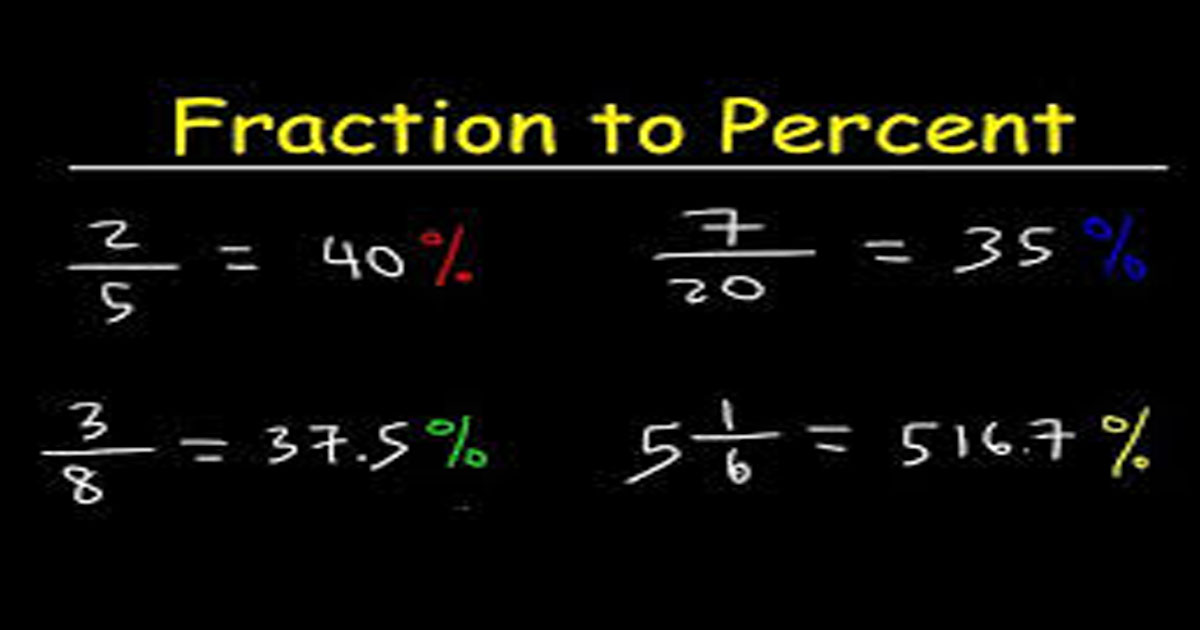When it comes to fractions and percentages, converting between the two can sometimes be a bit confusing. Whether you’re tackling a math problem, budgeting, or just curious about how fractions translate into percentages, understanding the conversion is key. In this guide, we’ll break down how to convert 7/8 into a percentage, explore its practical applications, and answer some common questions you might have.
What is a Fraction?
Definition of a Fraction
A fraction represents a part of a whole. It’s written as one number over another, separated by a line. For example, in 7/8, 7 is the numerator (the part you have), and 8 is the denominator (the total number of equal parts).
Types of Fractions
- Proper Fractions: Where the numerator is less than the denominator (e.g., 3/4).
- Improper Fractions: Where the numerator is greater than or equal to the denominator (e.g., 7/6).
- Mixed Numbers: A whole number combined with a fraction (e.g., 1 1/2).
How to Convert a Fraction to a Percent
Step-by-Step Conversion
To convert a fraction to a percentage, follow these steps:
- Divide the Numerator by the Denominator: This gives you a decimal.
- Multiply the Decimal by 100: This converts the decimal into a percentage.
Example: Converting 7/8
- Divide 7 by 8: 7÷8=0.8757 ÷ 8 = 0.8757÷8=0.875.
- Multiply 0.875 by 100: 0.875×100=87.50.875 × 100 = 87.50.875×100=87.5.
So, 7/8 as a percent is 87.5%.
Why Convert Fractions to Percentages?
Practical Applications
- Budgeting: To determine what percentage of your budget is spent on a specific category.
- Statistics: To present data in a more understandable format.
- Education: Helps in teaching and understanding basic mathematical concepts.
Benefits of Understanding Percentages
Understanding percentages helps in making better financial decisions, interpreting data, and comprehending statistical information.
Common Misconceptions About Percentages
Percentages Are Not Always Whole Numbers
Percentages can be fractions themselves, resulting in decimal values like 87.5%.
Percentages and Fractions Are Interchangeable
While they are related, fractions and percentages are different ways of representing the same value. For instance, 7/8 and 87.5% represent the same portion but in different formats.
Practical Examples Using 7/8
Example 1: Discounts and Sales
If a store offers a discount of 7/8 on an item, it means you are paying only 1/8 of the original price. This translates to a discount of 87.5%.
Example 2: Test Scores
If you score 7/8 on a test, your percentage score would be 87.5%. This helps in understanding how well you did compared to a total of 100%.
Frequently Asked Questions
1. What is 7/8 as a decimal?
7/8 as a decimal is 0.875.
2. How do you write 87.5% as a fraction?
87.5% can be written as 7/8 when converted to a fraction.
3. Can all fractions be converted to percentages?
Yes, all fractions can be converted to percentages.
4. Why is it important to understand percentages?
Understanding percentages helps in making informed decisions, budgeting effectively, and analyzing data.
5. Are there any tools to help convert fractions to percentages?
Yes, there are many online calculators and tools available for quick conversions.
Conclusion
Converting 7/8 into a percentage is a straightforward process that results in 87.5%. This conversion is not only useful in everyday situations but also helps in understanding various mathematical concepts. By grasping how fractions translate into percentages, you’ll be better equipped to handle financial decisions, interpret data, and excel in mathematical tasks.















Leave a Reply